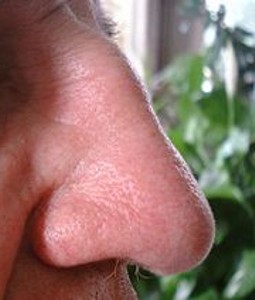WELCOME TO OUR PARKINSON'S PLACE!
I HAVE PARKINSON'S DISEASES AND THOUGHT IT WOULD BE NICE TO HAVE A PLACE WHERE THE CONTENTS OF UPDATED NEWS IS FOUND IN ONE PLACE. THAT IS WHY I BEGAN THIS BLOG.
I COPY NEWS ARTICLES PERTAINING TO RESEARCH, NEWS AND INFORMATION FOR PARKINSON'S DISEASE, DEMENTIA, THE BRAIN, DEPRESSION AND PARKINSON'S WITH DYSTONIA. I ALSO POST ABOUT FUNDRAISING FOR PARKINSON'S DISEASE AND EVENTS. I TRY TO BE UP-TO-DATE AS POSSIBLE.
I AM NOT RESPONSIBLE FOR IT'S CONTENTS. I AM JUST A COPIER OF INFORMATION SEARCHED ON THE COMPUTER. PLEASE UNDERSTAND THE COPIES ARE JUST THAT, COPIES AND AT TIMES, I AM UNABLE TO ENLARGE THE WORDING OR KEEP IT UNIFORMED AS I WISH. IT IS IMPORTANT TO UNDERSTAND I AM A PERSON WITH PARKINSON'S DISEASE. I HAVE NO MEDICAL EDUCATION,
I JUST WANT TO SHARE WITH YOU WHAT I READ ON THE INTERNET. IT IS UP TO YOU TO DECIDE WHETHER TO READ IT AND TALK IT OVER WITH YOUR DOCTOR. I AM JUST THE COPIER OF DOCUMENTS FROM THE COMPUTER. I DO NOT HAVE PROOF OF FACT OR FICTION OF THE ARTICLE. I ALSO TRY TO PLACE A LINK AT THE BOTTOM OF EACH ARTICLE TO SHOW WHERE I RECEIVED THE INFORMATION SO THAT YOU MAY WANT TO VISIT THEIR SITE.
THIS IS FOR YOU TO READ AND TO ALWAYS KEEP AN OPEN MIND.
PLEASE DISCUSS THIS WITH YOUR DOCTOR, SHOULD YOU HAVE ANY QUESTIONS, OR CONCERNS. NEVER DO ANYTHING WITHOUT TALKING TO YOUR DOCTOR FIRST..
I DO NOT MAKE ANY MONEY FROM THIS WEBSITE. I VOLUNTEER MY TIME TO HELP ALL OF US TO BE INFORMED.
I WILL NOT ACCEPT ANY ADVERTISEMENT OR HEALING POWERS, HEALING FROM HERBS AND ETC. UNLESS IT HAS GONE THROUGH TRIALS AND APPROVED BY FDA. IT WILL GO INTO SPAM.
THIS IS A FREE SITE FOR ALL WITH NO ADVERTISEMENTS
THANK YOU FOR VISITING! TOGETHER WE CAN MAKE A DIFFERENCE!
TRANSLATE
Saturday, July 30, 2011
Increased risk of Parkinson’s disease in methamphetamine users, CAMH study finds
RHINORRHEA IN PARKINSON'S DISEASE
26th July 2011 - New research
Movement Disorders [2011] 26 (2) : 320-323 (Chou KL, Koeppe RA, Bohnen NI.)
Rhinorrhea is nasal discharge, commonly referred to as a runny nose. For more information go to Rhinorrhea. Although, nasal discharge is usually assumed to occur for a variety of reasons such as colds, flu or allergies, it is a common symptom in Parkinson's Disease. Researchers have found that people with Parkinson's Disease multiplied the likelihood of nasal discharge 5 times the average. This is after other possible causes had been accounted for.
 Over two thirds (68%) of people who had Parkinson's Disease reported nasal discharge. There was no relationship with age or severity of symptoms. The nasal discharge of over half (52%) of people with Parkinson's Disease was accompanied with light headedness. The symptom of lightheadedness is uncommon in people who do not have Parkinson's Disease, occurring in less than 1 in 10. Another recent study found similar results. The frequency of nasal discharge can lead to a reduction in the sense of smell, which is common in Parkinson's Disease.
Over two thirds (68%) of people who had Parkinson's Disease reported nasal discharge. There was no relationship with age or severity of symptoms. The nasal discharge of over half (52%) of people with Parkinson's Disease was accompanied with light headedness. The symptom of lightheadedness is uncommon in people who do not have Parkinson's Disease, occurring in less than 1 in 10. Another recent study found similar results. The frequency of nasal discharge can lead to a reduction in the sense of smell, which is common in Parkinson's Disease. Single and dual task gait training in people with Parkinson's Disease: A protocol for a randomised controlled trial
From Northwest Parkinsons Foundation:
Difficulty performing more than one task at a time (dual tasking) is a common and disabling problem experienced by people with Parkinson disease (PD). If asked to perform another task when walking, people with PD often take shorter steps or walk more slowly.
Currently there is uncertainty about whether clinicians should teach people with PD to avoid dual tasking or whether they should encourage them to practice dual tasking with the hope that practice will lead to enhanced performance. This study will address this issue by comparing single to dual task gait training.Methods and design: A prospective randomised clinical trial is being conducted.
Sixty participants with idiopathic PD will be recruited, provided they score I-IV on the modified Hoehn and Yahr (1967) scale, and fulfil other inclusion criteria. Participants will be randomly allocated to either a single or dual task gait training group.Both groups will receive 12 hours of walking training over 4 weeks. The single task group will undertake gait training with cueing strategies to increase step length.The dual task group will train to improve step length when walking and performing a variety of added tasks.
Both groups will receive a tailored home program for 6 months.Blinded assessors will conduct four assessments: two baseline assessments, one post intervention and one at 6 months follow-up.
The primary outcome measure will be step length when dual tasking over 8m.Secondary outcome measures include: spatiotemporal gait parameters when walking under single and dual task conditions, measures of executive function, the timed up and go test, measures of community mobility, and quality of life.
All analyses will be based on intention to treat principle. Discussion. This trial will examine the immediate and longer term effect of dual task walking training as compared to single task training in people with idiopathic PD, at the impairment, activity, and participation levels.It has the potential to identify a new intervention that may improve and maintain walking beyond the laboratory. The results of this trial will provide guidance forclinicians in the development of walking training programs for people with PD.Trial Registration: ACTRN12609000791235
